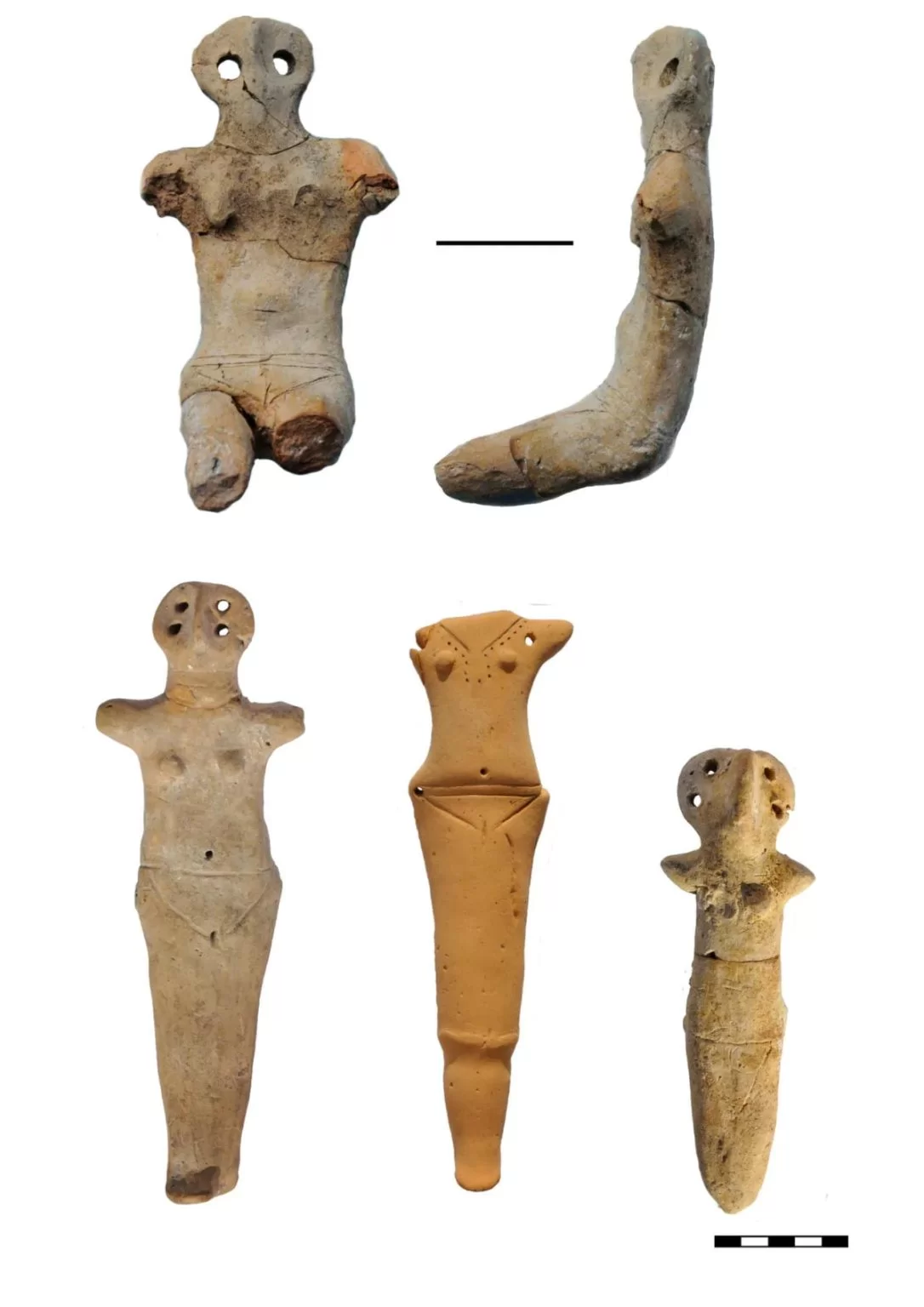
Verteba Cave in Ukraine has newly yielded ambiguous but promising information from the time of the dawn of agriculture in Eastern Europe, some 5,000 years ago.
Under the leadership of Sokhatskyi Mykhailo, archaeologists from the Borschivskyy Local History Museum made discoveries in March that may illuminate the Cucuteni-Trypillian culture that spread over territory in modern-day Ukraine, Romania, and Moldovia for two millennia. Mykhailo is a leading scholar on Trypillian culture, which thrived in the late Neolithic and Chalocolithic periods (6,000 to 2,750 B.C.E).
Few burial sites have been uncovered, and the new discoveries may shed light on their burial practices, according to a report from Haaretz. In an unprecedented find, five female clay figurines were placed in a previously undiscovered niche in the wall of this well-studied cave, “sheltered by the tusks of a wild boar,” said Mykhailo. These may have been totems, meant to protect their owners from harm, themselves protected by enigmatic means.
Trypillian pottery found in Verteba Cave. Photo: Mykhailo Sokhatskyi.
The Cucuteni-Trypillian culture had metallurgical skills and created pottery, farming and keeping domestic animals in sprawling settlements that they inhabited for as much as 80 years before mysteriously burning them and moving on, according to Arkeonews. Pottery finds are very rare, but Mykhailo’s team unearthed a massive clay storage jar filled with an as-yet-unidentified white material.
Entry to the labyrinthine Verteba Cave, which stretches over more than five miles, is gained near the Western Ukrainian village of Bilche-Zolote, north of the Dniester River. Experts have been studying the cave ever since it was discovered in 1829, referring to it as “Pompeii on the Dniester,” owing to its rich deposits of antique material, some of which is on display in the cave, which is open to public tours.
Recent discoveries have turned up three separate historical layers of deposits, giving information on some 800 years of inhabitation. These were periods marked by incursions into the area by tribes from neighboring regions, and in fact, skeletons discovered in the cave suggest violent deaths. Other evidence suggests difficult lives, marked by malnutrition or disease.
For these reasons, experts believe the cave was a hiding spot during violent periods, and in fact, thousands of years later, Jews fleeing the Nazis also used the cave as a refuge, Haaretz points out.
More Trending Stories: